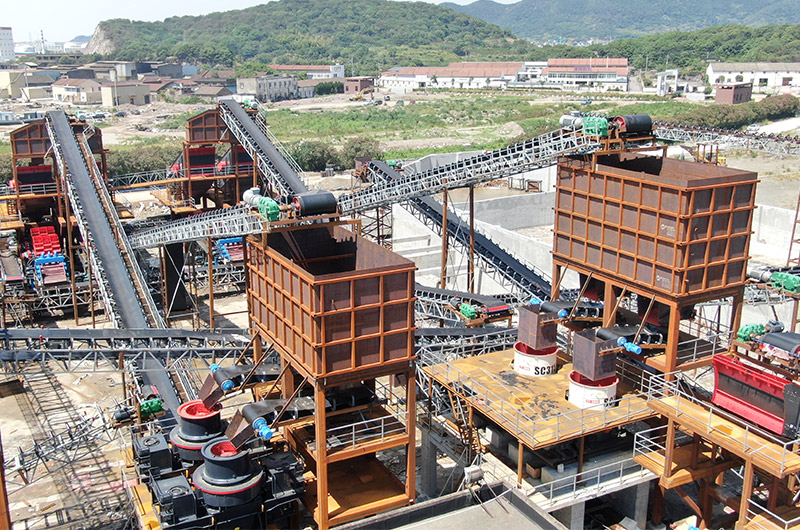Top Tips on How to Manufacture High-quality M Sand
In the construction industry, manufactured sand (M sand) is widely used in the production of concrete and mortar mix due to its stable quality and controllable particle size distribution.
Compared with natural river sand, M sand can be produced through an artificially controlled sand making process to meet specific civil engineering needs.
In order to produce high-quality machine-made sand, you must first understand its characteristics. Therefore, this blog will explore some key factors that affect the quality of sand on this basis, helping you adjust the sand production line accordingly.

About Manufactured sand
Manufactured sand, the full form of M sand, is also called artificial sand or crushed sand. It is manufactured by crushing large rocks, stones, or ores into fine particles, which are then washed and finely graded.
However, natural sand is formed by natural processes. It comes from rivers, lakes and oceans, and contains human, and animal bones, and its strength and durability depend on natural conditions.
Except for the different sources, the M sand manufacturing process has less impact on the environment. It will not damage riverbeds and erode coasts and is more sustainable than mining natural sand.
In terms of uses, M sand (such as silica sand and quartz sand) is widely used in the production of building materials such as concrete, mortar, and asphalt, while natural sand is commonly found in construction, casting, and glass manufacturing.
-
Precise particle size control, higher fineness modulus than natural sand
- Rough texture and high stone powder content boost concrete fluidity, increasing compressive strength by 6%每9% and flexural strength by 12%每15%
- Fewer impurities (such as clay, dust, and silt) and denser particle packing improve wear resistance in concrete
- Cubic or angular particles enhance cement bonding strength
- Local production near construction sites can reduce transportation costs by 30%每50%
-
M sand for concreting〞used in concrete
- M sand for plasterin〞used in tiling and wall plastering purposes
- M sand for brick or blockwork〞used for masonry or brick or block-laying works
Six factors affecting the quality of M sand
1. Raw material selection
When selecting raw materials, we need to consider the composition of the parent rock, raw material strength, mud content, and powder content. By rationally selecting and pre-treating raw materials, the quality of M sand can be effectively improved.
The chemical and mineral composition of the parent rock determines if artificial sand contains harmful substances and alkali-aggregate reactivity. The parent rock must not have potential alkali-aggregate reactivity.
Raw material strengthRaw materials for artificial sand must have high compressive strength of at least 150 MPa. Granite, basalt, and river pebbles are commonly recommended.
Mud content
It is very important to control the mud content in the raw material. The proportion of mud should be minimized when mining.
Powder content
Too high powder content will affect the material transportation and reduce the output of the sand making machine. By pre-screening and removing excessive fine powder, the impact on the operation of the sand making machine can be reduced.
-
Quartz sandstone: Its strength and particle shape reach or even exceed natural sand.
- River pebbles: Pebble sand is the best choice to replace natural sand in terms of strength, particle shape, and color.
- Limestone: It can be used as a sand and gravel raw material on the sand and gravel production line at the same time, and the stone powder can also be reused.
- Basalt: Mixing sand made from basalt into concrete makes the concrete lighter but still very strong. It also has the characteristics of sound insulation and heat insulation.
- Granite: Granite with high quartz content and low sulfide content is a high-quality sand making raw material, but the pulverization problem must be solved.
2. Sand crushing process
Different materials require different crushers to reduce the particle size. We use primary crushers, secondary crushers, and tertiary crushers for coarse crushing, medium crushing, and fine crushing of materials.
K Primary crusher
Using Crusher to initially crush large rocks is a crucial step because it determines the efficiency of subsequent crushing and the quality of the final product.
Maximum feed size: ≒1,200 mm
Output size: 10每350 mm
Capacity: 1每1,435 tons/hou
L Secondary and tertiary crushers
Secondary crushing usually uses an impact or cone crusher to further reduce the particle size of the material in preparation for fine crushing in the sand making machine.
Feed size: ≒800 mm
Capacity: 30每2,000 t/h

